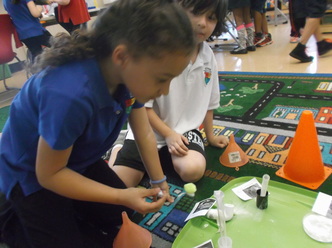
What a great way to end our agricultural engineering unit--combining what first graders have learned about the pollination system, materials and their properties, and the engineering design process!
Way to go 1st graders!
Agricultural engineers play and important role in all our lives. Since we all depend on agriculture in some way or another, their work is very important! First graders will be learning about plant and insect parts, and the role that both these organisms play as part of a pollination system. As agricultural engineers, they'll also be discovering some of the problems that can arise when the pollination system isn't functioning properly, and of course, they'll come to the rescue developing solutions!
 With their last design challenge in action, first graders are putting everything they've learned to the test! Using what they know about materials and their properties, as well as the results of their materials tests, they are designing hand pollinators for four different flowers: a poppy, a Dutchman's pipe, a jack-in-the-pulpit, and a bucket orchid. Each flower is structured differently, and the hand pollinator for one flower must be best suited to reach in to the flower where the pollen is located. If their hand pollinator isn't successful at getting "lots" of pollen, they'll use the engineering design process to improve their design! What a great way to end our agricultural engineering unit--combining what first graders have learned about the pollination system, materials and their properties, and the engineering design process! Way to go 1st graders! 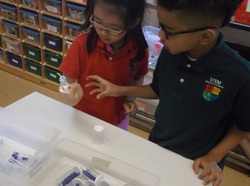 Which materials are best at picking up and dropping off pollen?First graders continue to test materials gathering evidence to support their claims. Will materials that are fuzzy in texture be good at both? Or do they need to be sticky? Will some materials be TOO sticky to drop off the pollen? Check back to see how they use the evidence to design hand pollinators of their own! 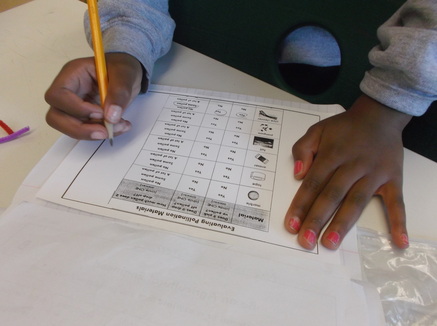 A student records the amount of pollen a materials picked up and dropped off! A student records the amount of pollen a materials picked up and dropped off! Having already investigated various materials' properties, first graders are now testing the amount of pollen a material can pick up AND drop off. Some materials are really fuzzy. Others are smooth. Some are super sticky and others are only slightly sticky. How do these properties allow it to pick up and drop off pollen? Are some materials better than others at doing this? Engineers must TEST, TEST, TEST! 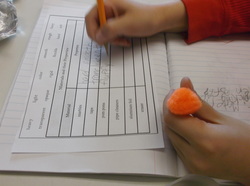 First graders know that Mariana should NOT bring a new insect to the Dominican Republic to help pollinate her plant. They know that it can cause damage to humans, other pollinators, or even the plants themselves. First graders' new idea...make a pollinator out of everyday materials that can move the pollen for the ohelo plant! They're investigating materials that could possibly be used to both pick up AND drop off pollen! Knowing their properties is super important! As first graders dig deeper into understanding the types of problems agricultural engineers face, they're spending time making observations of the many types of insects and plants that exist in the world. Each insect and plant is very different from one another, and in order for pollination to happen, an insect (or other pollinator) must be matched to the structure of a plant. If an insect is unable to gather nectar from a flower, there's no use in visiting it again. But once it finds a flower that it can feed from, now that's where lunch is at!!!!
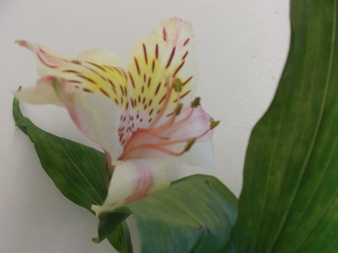 As part of our agricultural engineering unit, first graders took flowers apart to better understand they way they are structured. This will help students better understand the pollination system that exists between insects and flowers. Here are some great observations they made: "I see and feel the pollen!" "The nectar tastes like sugar and honey!" "I see lots and lots of seeds! Wow...will they grow into new flowers?" Great observations and questions, first grade! Keep up the great work! 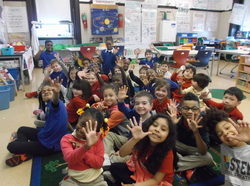 So why is pollination so important to agricultural engineers? Pollination is a process by which pollen is moved from flower to flower. Most often, pollen is moved by insects, but the wind and water can also help pollinate flowers. Insects land on flowers not because they are attracted to the pollen, but rather to the sweet smelling nectar inside. The nectar is insects food. First graders participated in a working model for how pollination works. Using paper bag flowers, their hands as bees, and cheese puffs as nectar, they quickly realized that they were picking up and dropping off "pollen" without even knowing it. When pollen is transferred from flower to flower, there's a good chance that a new seed will develop! And new seeds grow fruit around them 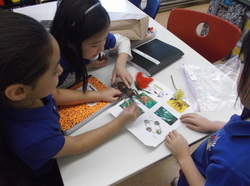 Since most first graders hadn't been exposed to the words "agriculture" or "agricultural," we started our unit with a Mystery Bag that contained items related to our study our agricultural. Agriculture is officially defined as: the science or practice of farming, including cultivation of the soil for the growing of crops and the rearing of animals to provide food, wool, and other products for human use! We'll be digging deeper into this "nature-focused" field of engineering, discovering relationships between animals and plants. We'll also be discovering what happens when agricultural engineers need to step in and help solve problems related to nature. 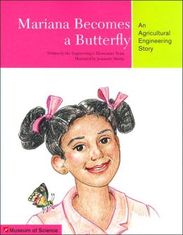 Mariana is a young girl living in the Dominican Republic. She notices one day that her favorite plant no longer produces berries. Making observations about how insects visit other plants, Mariana starts to question why her plant isn't visited. How can she develop a solution to this pollination problem? We'll just have to wait and see to find out! Key Vocabulary: agricultural engineer, plant, insect, pollination, pollen, system, materials, properties and engineering design process. |
PollinationWhat would our world be like without pollinators? Archives
May 2014
Categories |